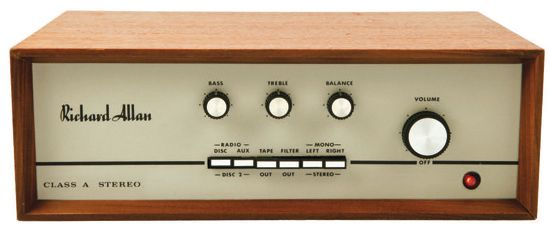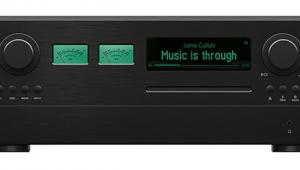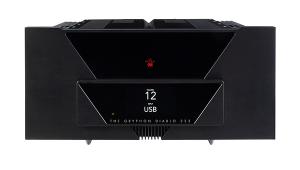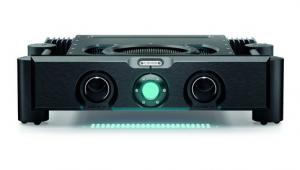Richard Allan A21 (Vintage)

Author of a couple of 1967-8 HFN features comparing the operation of output stages in Class A and AB transistor amplifiers, Jim Sugden then owned a company producing lab and test equipment. But thanks to a collaboration with Richard Allan, a company making speakers based nearby in Yorkshire, the first Class A amplifier made by Sugden was marketed under the Richard Allan name.
The A21 amplifier made its first public appearance at the ’68 London Audio Fair in London. A 10W-per-channel integrated, it sold for £52, like Leak’s Stereo 30. These amps were handmade and entrusted to a single employee.
Running the output stages in Class A with the earlier germanium transistors was simply not practicable due to thermal runaway problems. On the plus side, crossover distortion was reduced, along with the objectionable high order harmonics that accompanied it. Class A also offers a negligible distortion content at low power.
The front panel of the A21 is nothing if not smart: uncluttered and functional without being overcomplicated. The rear is a different story, with four dominant heatsinks to dissipate heat from the output transistors. Also at the rear are four (non-standard) five-pin DIN sockets, the loudspeaker terminals, a voltage selector and even a 2A three-pin mains output socket.
Remove the wooden sleeve and the internal layout and quality of construction are impressive. As for the circuit, a rail voltage of 32V fed the power output stages, each drawing nearly 1A per channel. The output transistors used were BD121s, which had a maximum current rating of 5A and a dissipation of 45W. To achieve the maximum power output of 10W per channel, the manufacturer’s specification states that this is into a 6ohm load. A sensitivity of 200mV is given for all of the inputs, with the exception of the magnetic phono for which 3.5mV is quoted.
Reviewers praised the sound with one reservation voiced over its limited power output of 8.5W into 8ohms and 5.4W into 15ohms, restricting its use to fairly sensitive loudspeakers. The alliance between Sugden and Richard Allan lasted for around 12 months until Sugden decided to release a higher powered Mk II under his own name. J E Sugden still manufactures its latest version of the A21 in Yorks.
ENGAGING STILL
The original amp is a real corker. Fed from a Philips CD960 multibit CD player and driving a set of JR149 speakers [see p99] it proved to be amazingly engaging – even in totally original form, delivering real snap and joy. The mids and treble were ridiculously liquid, even by very modern standards. Playing ABBA’s ‘The Day Before You Came’ from The Visitors [Polydor 533 978-2] the amp delivered all the track’s emotional impact intact. Overall presentation had a mild veiling by current standards, but frankly the A21 rendered the track far more capably than many a modern offering. The layered production was displayed superbly, while the soundstage was enormous. Compared with the Leak Stereo 30 and Goodmans Maxamp, the A21 is in a different league.
Fleetwood Mac’s ‘The Chain’ from Rumours could have done with a tad more power, but even when pushed, the amp stayed smooth and unruffled. But this track would have benefited from extra weight and definition at higher levels. The circuit employed in the original A21 power amp is total simplicity. And grossly inefficient! It’s as close as you get to a ‘transistor valve amp’. The preamp is not great, and introduces noise and hiss. Internally, a small four-pin Bulgin plug connects pre- to power amp. Those handy at DIY would be wise to modify the A21 as a singleinput power amp. The effect on sound of removing the preamp from the equation is quite a revelation, and the A21 is just sensitive enough to run with a passive preamp.
VERDICT
We feel the A21 is the best of the vintage Brit transistor power amp brigade. It’s engaging, smooth sounding, yet able to deliver all the emotion of music. What’s more, the original company that made the amp will still service it.
Originally published in the Yearbook 2011


















































